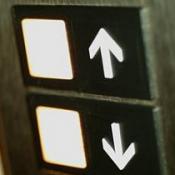 Why do some things spark sexual excitement for one person while those same things leave another person quite uninterested?
Why do some things spark sexual excitement for one person while those same things leave another person quite uninterested?
I frequently speak to people who are upset because they’re indulging in sexually compulsive behaviors that cause problems in their lives. (I want to emphasize these are not the same as turn-ons or fetishes that any couple might happily incorporate into love-making or sexual play. No problems there!)
Sometimes sexual feelings and behaviors become a problem because they get in the way of healthy intimacy. For example, one man secretly discovered porn on Dad’s smart phone at an early age. Now he becomes sexually aroused whenever he’s alone and picks up his smart phone. Another grew up in a rural area where he peeked into the outhouse to watch female family members urinate. Now he uses spy cams in restrooms or pays prostitutes to give “golden showers.”
Women also find themselves thinking and participating in sometimes dangerous behaviors that are sparked by early experiences that are exciting, confusing, or, more often, traumatic. For example, if a woman experiences sexual, physical, or emotional abuse as a child she may move into adulthood finding that again and again she is attracted to dangerous, high-risk sexual encounters with volatile or unavailable people.
When sex becomes a problem, it is useful to explore our arousal template, which is a mix of physiology and learning based on relational or sexual experiences. A template is a pattern or blue print of how and why individuals think or behave in habitual ways. Arousal is an automatic knee-jerk sexual reaction that is usually closely related to excitement, fear, or how we’ve been wounded.
Almost anything can become an unconscious trigger that cues us to become sexually excited or aroused. The Internet provides thousands of examples. Numerous websites feature young girls (often fully clothed) smoking cigarettes. These sites cater to men who became obsessed as adolescents with girls who smoke. Objects that are sexualized include shoes, cars, lingerie, or anything made of leather. This last example can be linked with sensation (the feel of leather against the skin) or scent.
Emotions such as rage, fear, shame, pain, loneliness, and sadness trigger some people to sexual arousal, as do physical characteristics. Most of us can relate to feeling attracted to a particular height, weight, hair color, and body shape, as in, “well, s/he is really not my type…” Or perhaps someone is, and we are “hooked”—there’s that arousal template again!
It organizes what we believe about consent, equality, respect, trust, safety, dishonesty, domination, objectification, power, and control. Arousal templates also shape what is valuable, worthwhile, thrilling, or desirable, and just as importantly, what is to be feared and avoided. It is primarily an unconscious map of how we have become wired sexually, built on preferences already determined by basic survival instincts.
Fortunately, most of us are not compelled by violent arousal templates to act out in a violent manner. Fantasy can be a delicious and enjoyable way to spice up sex with a partner or engage in self-pleasuring. Some of us, however, are overwhelmed and debilitated by the vagaries of our arousal template.
Used in conjunction with experience of different types of sexual patterns and courtship developments, the arousal template is an essential tool to help therapists gradually detail components of a client’s sexual history. Each of us possesses a unique model of sexuality, formed at least in part by incoming family messages, childhood abuse or neglect, culture, the media, and, of course, religious influences.
As we explore and better understand our childhood relational experiences and memories we get to deconstruct our arousal template with what I like to call “compassionate curiosity.” As we explore these early messages, we can recognize and gently release old patterns that no longer serve us. This is what sexual healing is all about!

The preceding article was solely written by the author named above. Any views and opinions expressed are not necessarily shared by GoodTherapy.org. Questions or concerns about the preceding article can be directed to the author or posted as a comment below.

 Going up? Or down? Channeling Sexual Energy
Going up? Or down? Channeling Sexual Energy Fetishes and the DSM: When Is a Kink a Mental Health Issue?
Fetishes and the DSM: When Is a Kink a Mental Health Issue? A GoodTherapy.org Review of ‘What Do Women Want?’
A GoodTherapy.org Review of ‘What Do Women Want?’

Please fill out all required fields to submit your message.
Invalid Email Address.
Please confirm that you are human.
Leave a Comment
By commenting you acknowledge acceptance of GoodTherapy.org's Terms and Conditions of Use.